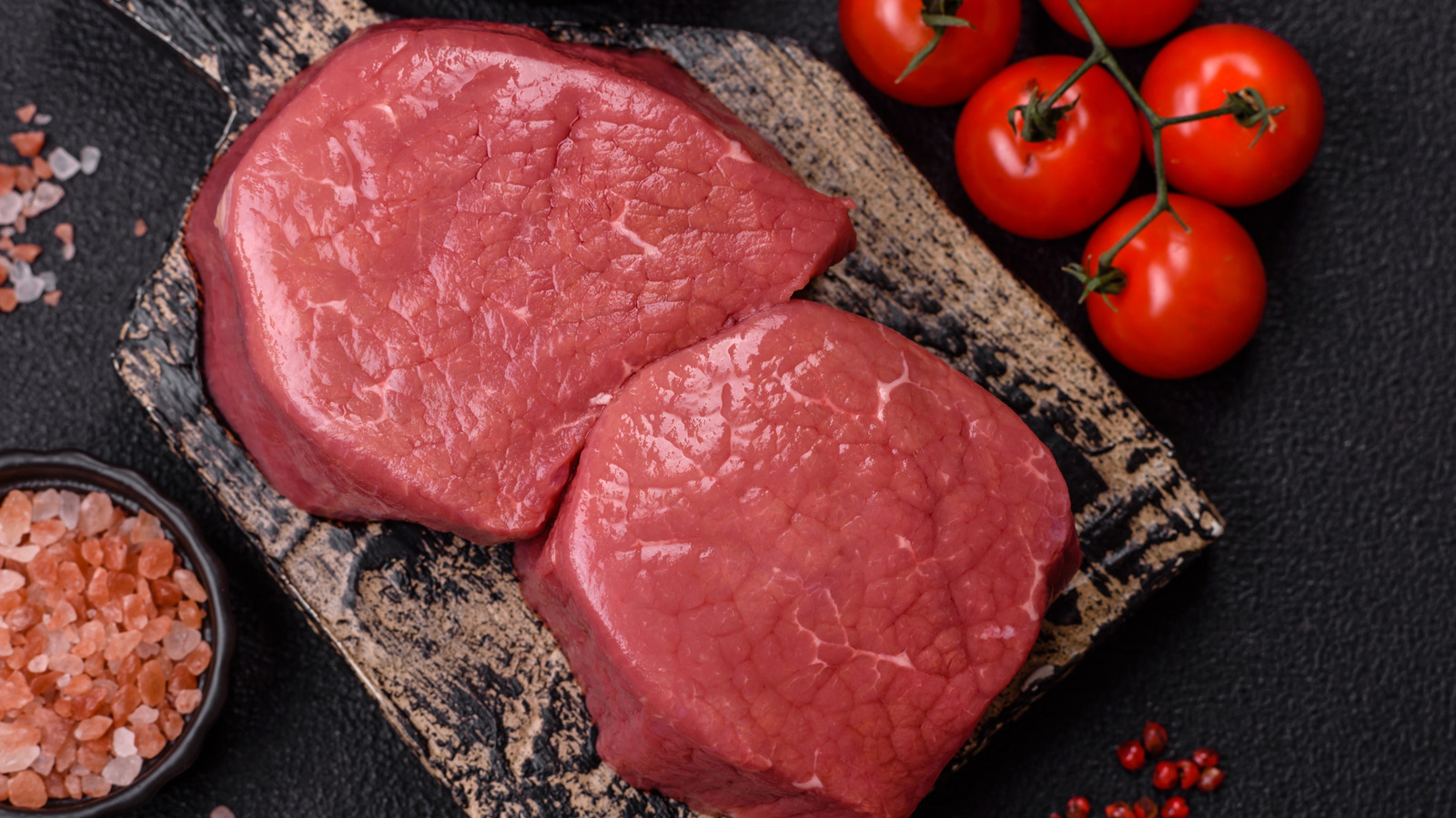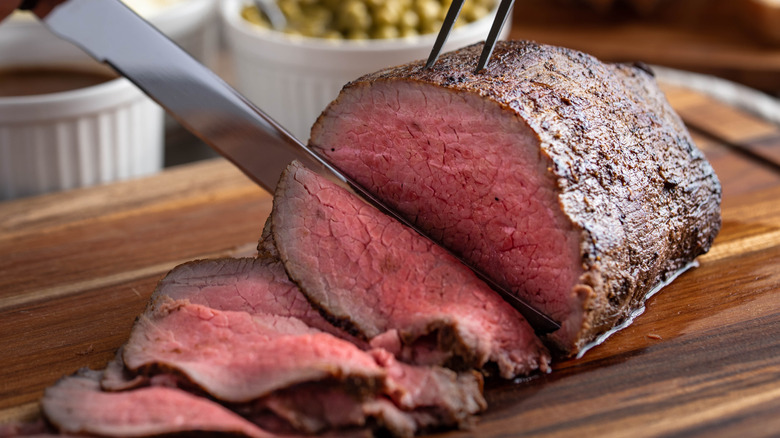If you’re in the market for an affordable cut of beef that can still offer up flavor, some common tips tend to be chuck or skirt steaks. However, there’s one less common cut that might just outdo them: beef eye of round.
This cut comes from the center of a cow’s round section at its rump, differentiating it from the top round (which is fairly tender) and the bottom round (a larger cut used for roasts). This is a part of the cow that is worked out a lot, so the eye of round is not the most tender, even if it looks a bit like the (much more tender) tenderloin. That said, this is often the case with cheaper beef cuts. It’s also a very lean cut of beef without much marbling at all (that means the streaks of fat that run through beef). Although common beef wisdom dictates that more marbling equals more flavor, eye of round bucks this assumption by offering up a robust, meaty taste.
And perhaps best of all, eye of round is affordable. Depending on where you shop and if you’re buying a larger piece or not, it can be as little as $7 per pound and roughly $7 to $11 in standard grocery store settings. That’s comfortably below other recommendable cheap cuts like flank steak or skirt steak. That said, it may be a little tougher to find in the U.S. compared to these very common cuts.
Ways to prepare eye of round
Once you’ve found some eye of round, be careful with how you prepare it to avoid tough, dry meat. Its lack of fat means that some cooks don’t recommend grilling an eye of round since it can dry out, and even if you get it right, it’s not the most tender. However, you can enhance the cut’s tenderness by marinating it. Ideally, any marinade will have sufficient acid to tenderize the meat and fat to prevent it from drying out. Then, it can be quickly seared in a pan, but you’ll want to stick to the rare side to avoid it being tough.
If that’s not to your taste, roasting is a good option, particularly since the cut sometimes comes in large, roast-friendly sizes. Don’t roast it past medium, and slice it thinly and against the grain so that any potentially chewy muscle fibers are broken up. (Such thin slicing is also a good idea if you’re cooking it like a steak.)
These aren’t your only options, though: Slow-cooking or braising eye of round in a recipe like a stew can also work well, as the low-and-slow cooking approach gives it time to tenderize. Whichever method you choose, just make sure the eye of round has a chance to tenderize, be it through a marinade or slow cooking, and you should be on your way to a tasty dinner.






